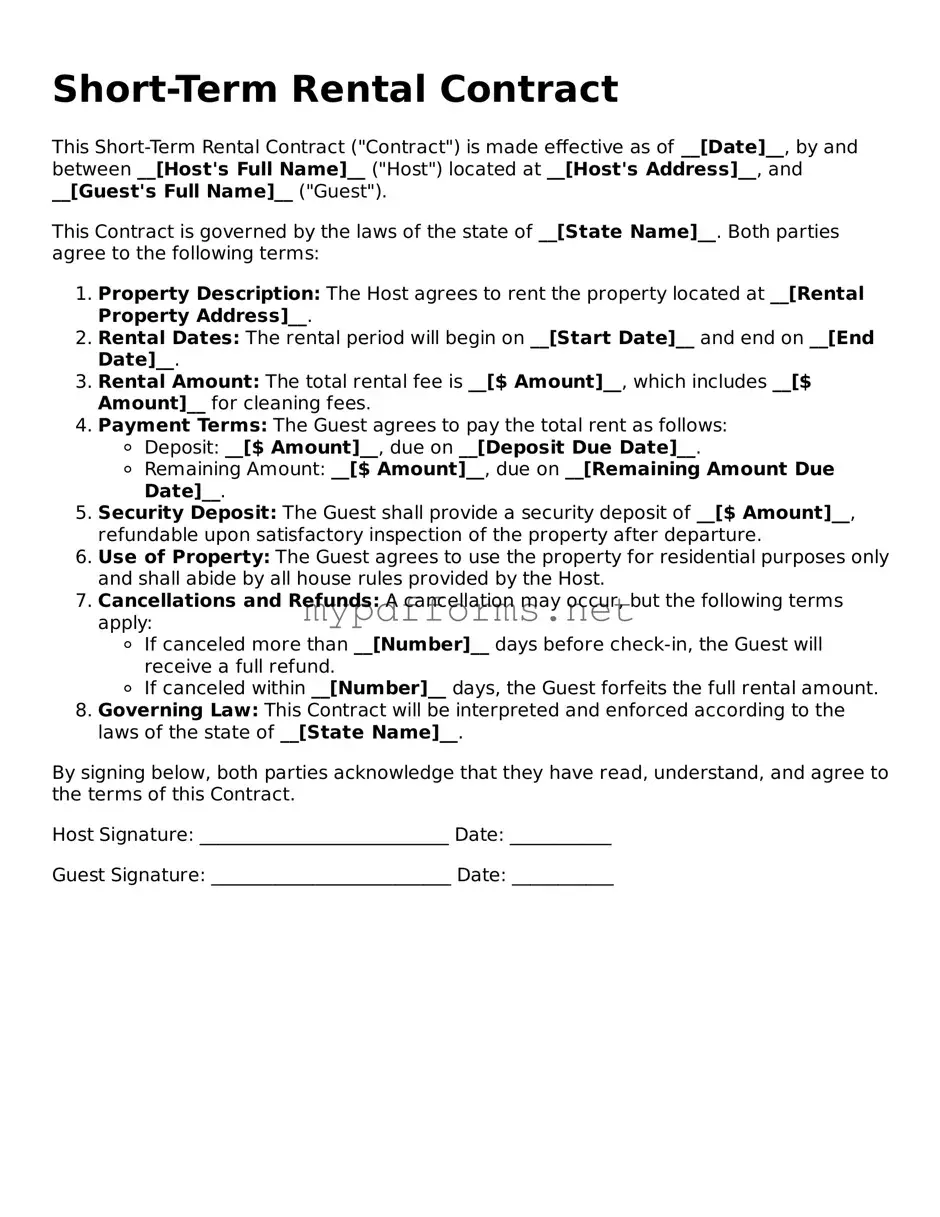Short-Term Rental Contract Template
A Short-Term Rental Contract is a legal agreement between property owners and renters that outlines the terms and conditions for renting a property for a brief period. This contract serves to protect both parties by clearly defining expectations, responsibilities, and potential liabilities during the rental period. For a smooth rental experience, consider filling out the form by clicking the button below.
Modify Document Here
